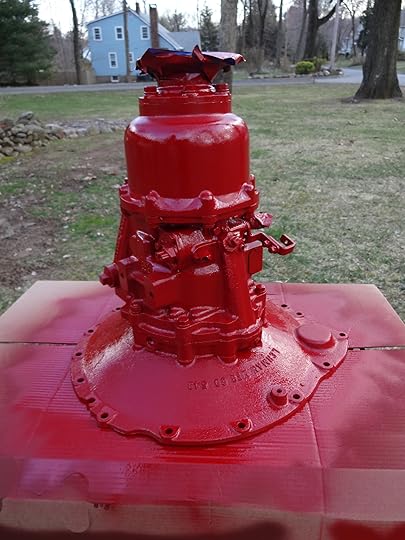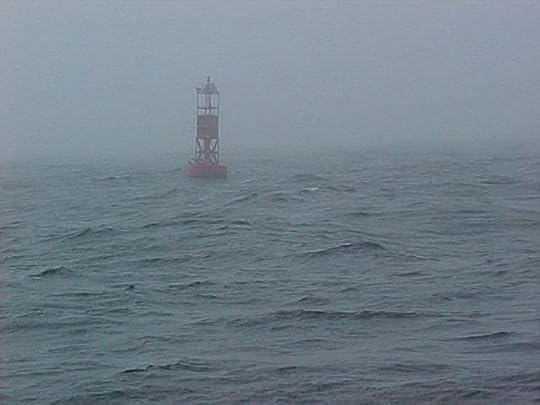C.E. Grundler's Blog, page 9
November 16, 2013
Letting go of Perfection
So another winter is just around the corner, and once again, Annabel Lee remains right where she’s been for far too long. No, the work I’ve been doing should have never taken this long, but sometimes health, hurricanes, and life in general get in the way. All the same I do know for certain (with the exception of any unforeseen impending disasters, of which I’ve had enough, thank you very much,) I am on the home stretch. If all goes according to plans (okay, go ahead and laugh. I know the boat gods are even as I type this.) her completely re-cored decks will once again be sheathed in fiberglass, and she WILL WILL WILL be afloat come spring, her decks nice and solid, her engine gleaming and purring, and her new-old mast standing high and proud. I may have mentioned in the past, it’s my delusional optimism that keeps me going. Hey, sometimes you just have to work with what you’ve got.
Now, I’ve heard the whispers. I know what some people are saying. I’m a perfectionist, and until I come to terms with that, the boat will never be done. And that is true to some extent. For one, no boat is ever truly done –that just goes with the nature of boats. And I am a perfectionist when it comes to the boat, but only to a point. For example, I have a strong dislike for leaking decks, and I believe if you’re going to tear them all up and re-core them, you might as well do it once and do it right. So no, I won’t cut corners there. And I strongly believe that the engine room should be the cleanest, shiniest area on the entire boat, because then if there are any leaks, they are clear and easily located and addressed. But beyond that, I’m actually rather partial to the New England workboat philosophy – minimal brightwork, minimal shiny bits, and simply freshen up the paint once a season. Let the boat look respectable, let her show she’s maintained, but don’t sweat the finish. Personally, I’m seriously considering simply rolling the hull with a nice, flat, off-white paint. It’s a look I’m rather fond of, and not just aesthetically. It’s a look that says, “This boat isn’t just a show piece.”
Don’t get me wrong – I’m the first to admire a truly beautiful, meticulous finish. You’ve got to respect the work and discipline that goes into achieving and maintaining it, and brightwork that gleams with flawless richness is truly a thing of beauty. I’d been that obsessive on my old catboat, Myra Lee, and took great pride in the admiration she attracted. But these days I’m letting go of that ideal. So long as she’s mechanically and structurally sound, I’d prefer Annabel Lee be less of a show piece and more of a functional, functioning boat. A boat I won’t mind dogs romping around, and one I won’t mind hauling a striped bass aboard. A boat that guests don’t have to remove their shoes to board. A boat that dinghies can thump against all night without concern. A boat I don’t have to pamper. A boat with the lowest maintenance-to-use ratio I can achieve. A boat I can simply enjoy.
It’s easy to get caught up in the quest for perfection. As a writer, there’s always another sentence we can tweak, and on boats, there’s always something that could shine just that much more. But there’s a point where it might be best to let go of perfection in exchange for ‘good enough’. Because in the end, once Annabel Lee is finally anchored out, as the sun dips below the horizon as the clouds streak the sky with a magnificent pink and orange display, the last thing that will matter is how shiny her hull is.
And on that note, I found this video had been emailed to me from Jamestown Distributors, and it sums this philosophy up perfectly. It’s well worth watching.


October 22, 2013
But how did you get here??
Last week I mentioned cruising aboard the little cuddy-cabin my husband and owned back in our twenties. And as I said, we had many good times aboard that boat. But there’s one in particular we still laugh about – our arrival at Block Island. It was right after that two-day stop-over in Mystic, and wanting to squeeze in as much time as possible on the island, we departed the Seaport before dawn had begun to tint the horizon. We had our course plotted, the engine was running perfectly, and off we ventured into the darkness.
The passage went smoothly, with nothing but miles of wide, flat rollers while the engine hummed and the blackness gradually gave way to a murky fog-bound grey. We stayed on course, and right on schedule, we reached the red bell buoy marking the entrance to the Great Salt Pond. We motored slowly through the crowded anchorage and made our way to Payne’s Dock, where we had a slip waiting at the floating dock with the thirty foot and under crowd. It was still early; the sun was starting to burn away the gloom, people were just beginning to stir, and the fellow on the 28’ flybridge Carver we were docking beside paused from his mug of steaming coffee to give us a hand tying up. And then he asked the strangest question.
“How did you get here?”
Huh? I looked to my husband, he looked to me, and we both looked to the boat we’d docked only moments before. The answer seemed fairly self-evident. But maybe not. Carver asked a second time, as though we hadn’t understood the question. In reply, I pointed to the boat we were standing in.
But that, it seems, wasn’t the answer he was looking for, so this time he rephrased his question. “But the ferries aren’t running yet. How did you get here?”
Am I missing something here? My husband and I look at each other, perplexed, and this time I state the obvious: “We came by boat.”
Still Carver looked as baffled as us, and finally he elaborated enough to explain his confusion and clear up ours. He said, “But the ferry isn’t running this early. How did you find the island?”
Ahhh! That’s what he meant. I pointed to the compass and my husband held up the chart.
“Oh,” Carver replied. “You know how to use those? We just follow the ferry.”
And sure enough, later that day as we hiked around the island and saw the ferry arriving, it was trailed by a small flotilla of boats, much like a duck with ducklings. Apparently, our friend from the docks wasn’t the only one who used that method of navigation. And while it may have been a reliable way to get from point A to point B in those pre-GPS days, personally, I’d rather plot my own course to explore new and unfamiliar waters, rather than follow in someone else’s wake.


April 9, 2013
Transmission, transformed…
followed by some heavy duty cleaning…
soaking, cleaning, and, for some areas, sandblasting, (other parts included)…
followed by new seals, bearings, and very careful reassembly, and a few coats of primer…
and finally a nice coat or three of classic Ford red…
No more rusty, oily, leaky tranny. The transmission is all set to go back into the engine room, along with new motor mounts, hoses, lines, belts, filters, and more. More leaks banished, and best of all, the engine room will SPARKLE!


March 8, 2013
Today’s Agenda…
Engine room must sparkle! (Click on the text for a very funny comic. The entire piece is brilliant, but scroll down to the sixth panel for the reference here.)
For those of you who may be wondering, there’s a reason behind those cryptic and occasionally changing pictures I’ve been posting of my very dirty engine. Online photos aid in conversations with very nice and extremely helpful folks over at American Diesel Corp. For anyone with a Lehman, these are good people to know. And I’ll admit, at present the engine is not a pretty sight. But there are brighter days ahead! Parts are coming off, the bad stuff is being replaced and the good will be cleaned and repainted. When it all goes back together, everything is going to be shiny, in oh so many ways. Missing from the picture below but on the way, cans of white bilge-coat.





































